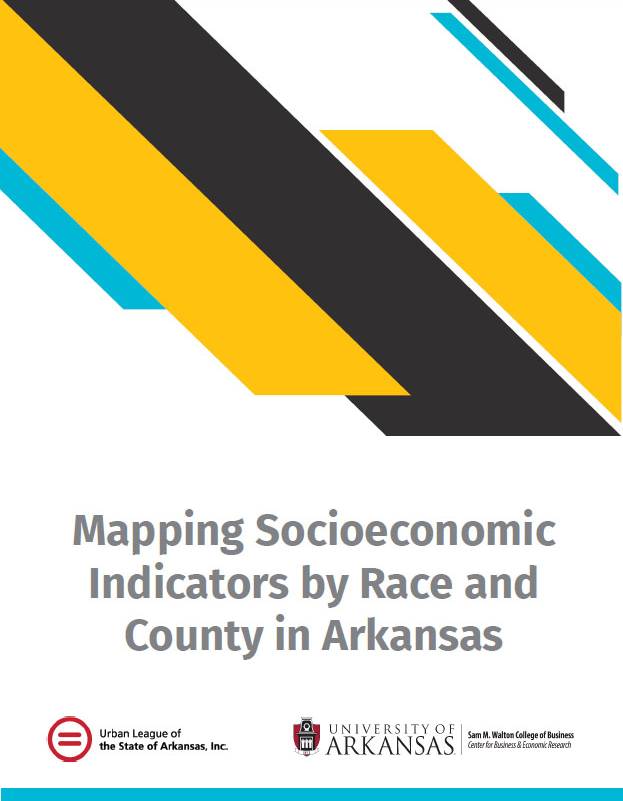Socioeconomic Indicators by Race in Arkansas
The Urban League of Arkansas partnered with the Center for Business and Economic Research
in the Sam M. Walton College of Business at the University of Arkansas to produce
a report that provides data to identify key areas of need in the African American
and Latinx communities in Arkansas and develop programs and policies to address them.
The key areas of concern include issues around the school to prison pipeline, poverty
rates, economic well-being, and educational attainment.
Data for each of these indicators was collected from 2015 to 2018 for the overall
population, whites, African Americans, and Latinx populations and presented in time
lapsed county-level density maps. Each year is displayed for 2 seconds in each image,
beginning with 2015 and ending with 2018.
The full report is available here:
Pipeline to Incarceration
Incarceration Rate
The proportion of incarcerated adults per 100 adults, by county of conviction.
Source: Arkansas Department of Correction
Prison Admissions
The proportion of adults admitted to the corrections system per 100 adults, by county of conviction.
Source: Arkansas Department of Correction
Corporal Punishment
The school disciplinary action of hitting of paddling students.
Source: Arkansas Department of Education
Expulsions
The exclusionary school disciplinary action of a student's dismissal from school.
Source: Arkansas Department of Education
In-School Suspension - ISS
The exclusionary school disciplinary action of a student's removal from the classroom and their placement.
Source: Arkansas Department of Education
Out-of-School Suspension - OSS
The exclusionary school disciplinary action of a student being sent home for a determined number of days before returning to school.
Source: Arkansas Department of Education
Poverty Rates
Poverty Rate
Percent of individuals with income below federal poverty guidelines.
Source: Census Bureau's 5-Year American Community Survey
Childhood Poverty Rate
Percent of individuals under the age of 18 from households with income below federal poverty guidelines.
Source: Census Bureau's 5-Year American Community Survey
Economic Indicators
Homeownership
Homeownership is the percent of housing which is owner-occupied.
Source: Census Bureau's 5-Year American Community Survey
Employment-to-Population Ratio
The employment-to-population ratio is the ratio of the total civilian employment to the civilian population.
Source: Census Bureau's 5-Year American Community Survey
Labor Force Participation Rate
The labor force participation rate is the proportion of the working-age population that is either working or actively looking for work.
Source: Census Bureau's 5-Year American Community Survey
Unemployment Rate
The unemployment rate is the number of unemployed (jobless, actively seeking work and available to take a job) as a percentage of the labor force (sum of the employment and unemployment).
Source: Census Bureau's 5-Year American Community Survey
Educational Attainment
Educational Attainment - High School/GED or Higher
Individuals who have attained a high school diploma/GED or higher and are 25 years of age or older.
Source: Census Bureau's 5-Year American Community Survey
Educational Attainment - Bachelors Degree or Higher
Individuals who have attained a bachelors degree or higher and are 25 years of age or older.
Source: Census Bureau's 5-Year American Community Survey


